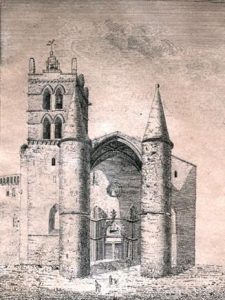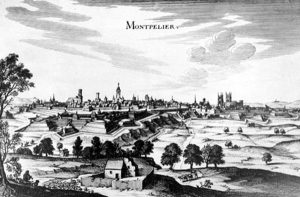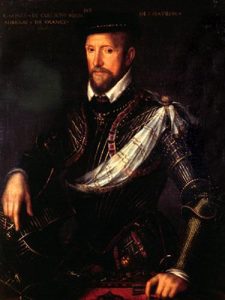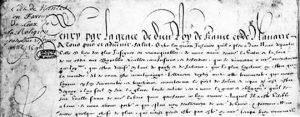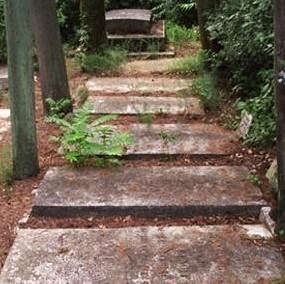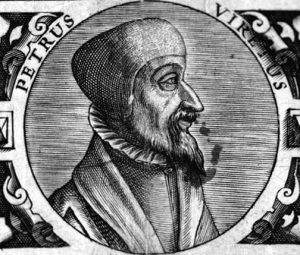The Big temple, built before the Edict of Nantes
After 1560, services were held in private houses, e.g. the Dessandrieux house, the Petit Scel, actually the Marché aux Fleurs Square, and at night in the Didier Baudin house or the Mage house, now the site of the Facultés Palace.
In 1561, the Reformed took possession of the church of Notre-Dame-des-Tables, then of the Saint-Pierre Cathedral. But Pierre Viret preached moderation and sent the Protestants back to the Mage house.
1583 : construction of the Big temple, on a rectangular plan, actually the Chabaneau Square. The date of the inauguration was engraved, along with the armorial bearings of François de Châtillon, the son of Gaspard II de Coligny.
The Small temple
After the Edict of Nantes (1598), the Small temple was built on Saint Côme Square and inaugurated in 1603.
From disorder to destruction
During the 17th century, the city was to go through times of great disorder, known as the “Grand Harlan”. Louis XIII himself came and signed the peace treaty in 1622. A general amnesty was proclaimed. Rohan, the Protestant military commander was appointed governor of Nîmes. Peace lasted for forty years.
After 1660, Nicolas de Lamoignon de Basville, quartermaster to the King, ignored the latter’s orders and repressed the Huguenots and Camisards until 1718.
1670 : quartermaster Basville had the Small Temple demolished.
1682 : Louis XIV ordered the Big Temple to be destroyed within twenty-four hours. The Reformed themselves were made to smash everything, including the benches, beams, etc. Then the spoilage was taken to the Protestant graveyard situated within the park between the Comédie theatre and the railway station square, the present-day d’Oblion Street.
1698 : year of bloodshed in Montpellier. Preachers were tortured or executed on the scaffold. This went on until the Edict of Tolerance (1787).

